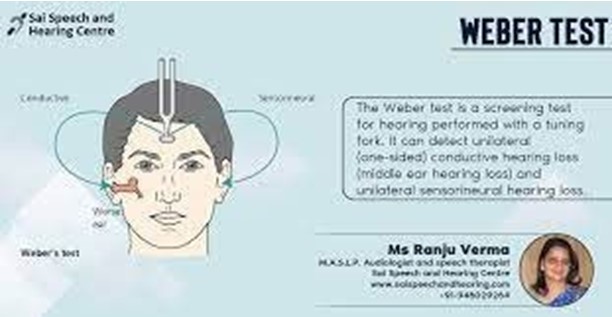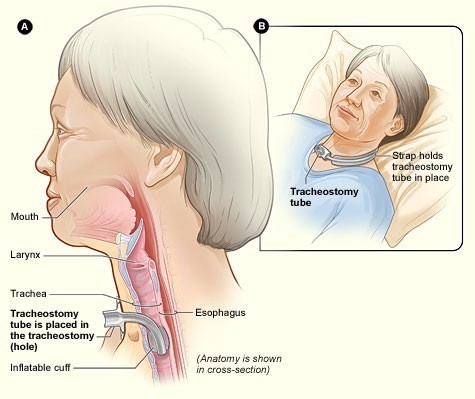A nurse is testing a client for conduction deafness by performing the Weber's test. Which of the following actions should the nurse take when performing this test?
Place the base of a vibrating tuning fork on the top of the client's head.
Count how many seconds a client can hear a tuning fork after it has been struck.
Place the base of a vibrating tuning fork on the client's mastoid process.
Move a vibrating tuning fork in front of the client's ear canals one after the other.
The Correct Answer is A
The correct answer is that the nurse should place the base of a vibrating tuning fork on the top of the client's head when performing Weber's test. Weber's test is a screening test for hearing that can detect unilateral (one-sided. conductive hearing loss (middle ear hearing loss) and unilateral sensorineural hearing loss (inner ear hearing loss)².
Options b, c and d are not correct actions for performing Weber's test. Counting how many seconds a client can hear a tuning fork after it has been struck, placing the base of a vibrating tuning fork on the client's mastoid process and moving a vibrating tuning fork in front of the client's ear canals one after the other are not part of Weber's test.

Nursing Test Bank
Naxlex Comprehensive Predictor Exams
Related Questions
Correct Answer is A
Explanation
When caring for a client who has a tracheostomy, the nurse should secure the tracheostomy ties to allow one finger to fit snugly underneath. This helps ensure that the tracheostomy tube is secure and prevents accidental dislodgement.
b) A cotton tip applicator should not be used to clean inside the inner cannula as it can leave fibers behind
and increase the risk of infection.
c) The skin around the stoma should be cleansed with sterile saline, not normal saline, to reduce the risk of infection.
d) The outer cannula should not be soaked in warm, soapy tap water as this can introduce bacteria and increase the risk of infection.

Correct Answer is D
Explanation
A. Palpate the abdomen: Palpating the abdomen before auscultating bowel sounds could potentially alter the findings by stimulating peristalsis or causing discomfort in the client, particularly in cases of appendicitis or other acute abdominal conditions.
B. Administer an antiemetic:A thorough assessment, including auscultation of bowel sounds, is needed first to rule out conditions like a bowel obstruction or paralytic ileus where antiemetics may be contraindicated.
C. Offer pain medication:Pain medication can mask symptoms and interfere with the nurse's or physician's ability to accurately assess the underlying cause of the client's symptoms, such as appendicitis.
D. Auscultate bowel sounds:Auscultating bowel sounds is the first action the nurse should take because it is a non-invasive assessment that can provide critical information. It helps determine if bowel sounds are present, hyperactive, hypoactive, or absent, which can guide further interventions and diagnostic steps.
Whether you are a student looking to ace your exams or a practicing nurse seeking to enhance your expertise , our nursing education contents will empower you with the confidence and competence to make a difference in the lives of patients and become a respected leader in the healthcare field.
Visit Naxlex, invest in your future and unlock endless possibilities with our unparalleled nursing education contents today
Report Wrong Answer on the Current Question
Do you disagree with the answer? If yes, what is your expected answer? Explain.
Kindly be descriptive with the issue you are facing.
